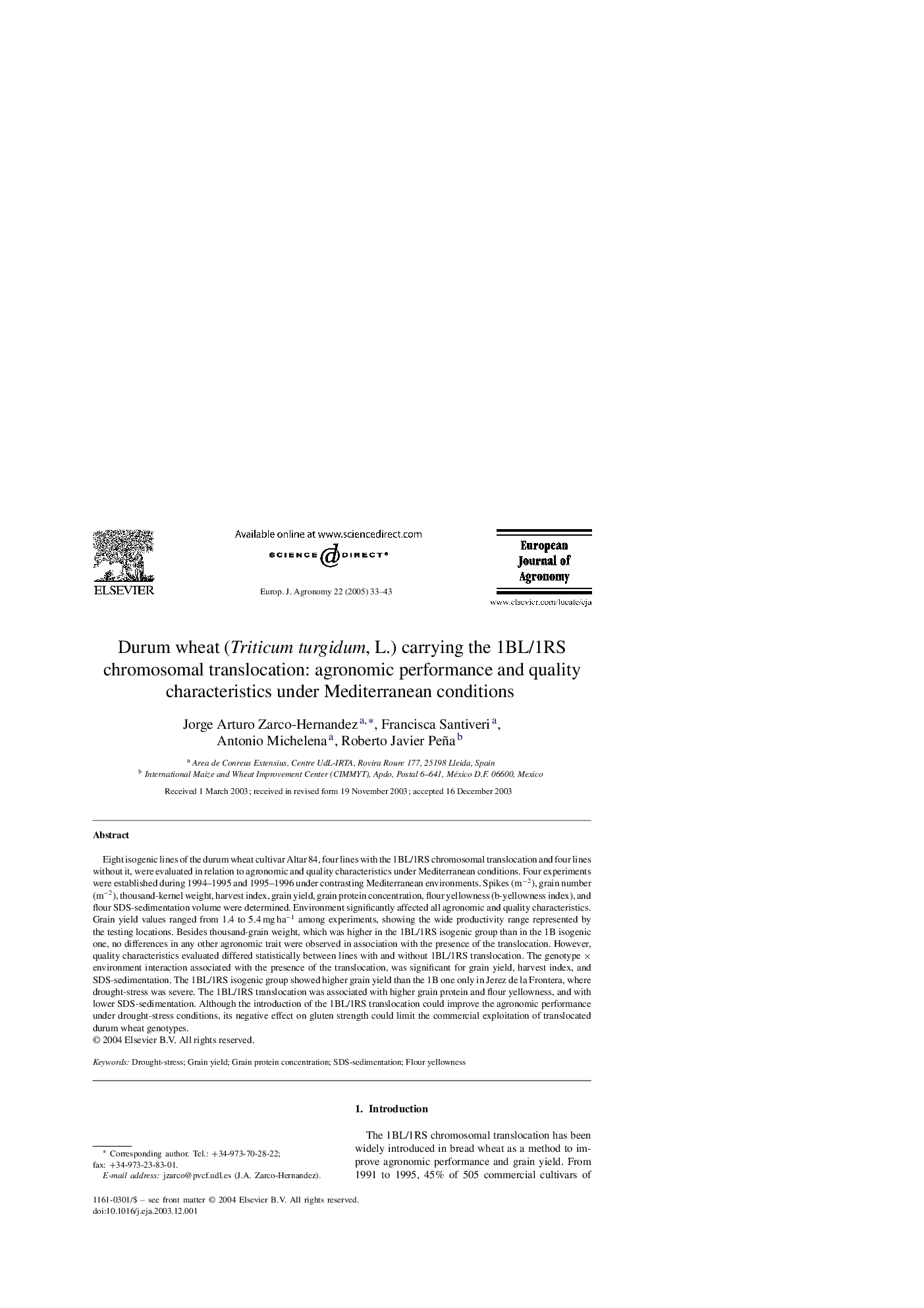| Article ID | Journal | Published Year | Pages | File Type |
|---|---|---|---|---|
| 10116666 | European Journal of Agronomy | 2005 | 11 Pages |
Abstract
Eight isogenic lines of the durum wheat cultivar Altar 84, four lines with the 1BL/1RS chromosomal translocation and four lines without it, were evaluated in relation to agronomic and quality characteristics under Mediterranean conditions. Four experiments were established during 1994-1995 and 1995-1996 under contrasting Mediterranean environments. Spikes (mâ2), grain number (mâ2), thousand-kernel weight, harvest index, grain yield, grain protein concentration, flour yellowness (b-yellowness index), and flour SDS-sedimentation volume were determined. Environment significantly affected all agronomic and quality characteristics. Grain yield values ranged from 1.4 to 5.4 mg haâ1 among experiments, showing the wide productivity range represented by the testing locations. Besides thousand-grain weight, which was higher in the 1BL/1RS isogenic group than in the 1B isogenic one, no differences in any other agronomic trait were observed in association with the presence of the translocation. However, quality characteristics evaluated differed statistically between lines with and without 1BL/1RS translocation. The genotypeÃenvironment interaction associated with the presence of the translocation, was significant for grain yield, harvest index, and SDS-sedimentation. The 1BL/1RS isogenic group showed higher grain yield than the 1B one only in Jerez de la Frontera, where drought-stress was severe. The 1BL/1RS translocation was associated with higher grain protein and flour yellowness, and with lower SDS-sedimentation. Although the introduction of the 1BL/1RS translocation could improve the agronomic performance under drought-stress conditions, its negative effect on gluten strength could limit the commercial exploitation of translocated durum wheat genotypes.
Related Topics
Life Sciences
Agricultural and Biological Sciences
Agronomy and Crop Science
Authors
Jorge Arturo Zarco-Hernandez, Francisca Santiveri, Antonio Michelena, Roberto Javier Peña,
